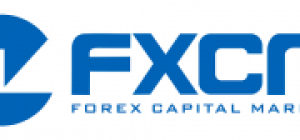 There is an old proverb that declares that there is no free lunch! It couldn’t be more accurate as most things in life cost money or something in return. It may not charge you directly, but the payments eventually come round. How, then, many online brokers of today are offering commission-free trading to the masses? Doesn’t it cost money to operate such an advanced technological service? Why would somebody be in the business of losing money?
There is an old proverb that declares that there is no free lunch! It couldn’t be more accurate as most things in life cost money or something in return. It may not charge you directly, but the payments eventually come round. How, then, many online brokers of today are offering commission-free trading to the masses? Doesn’t it cost money to operate such an advanced technological service? Why would somebody be in the business of losing money?
As attractive as it sounds, commission-free trading is something that certainly needs scrutiny. The Securities Exchange Commission (SEC) in the USA is already looking into that, intending to find out any irregularities behind such jaw-dropping practices. It doesn’t necessarily have to be a matter of investigation, though, with the brokers having many channels for an income. If they can earn enough money from all the other services they provide, they may also be offering commission-free trading to their customers.
Anyways, without further speculations, let’s have a look at the revenue streams of online brokers offering trading without any commission below.
Revenue Channels of a Commission-free Broker
Whether it’s a traditional broker or a new, shiny one, they invariably always have multiple channels for revenues. So even if they don’t make any money from one channel, for example, in commissions from traders, they still have other avenues to profit. It includes:
Payment for Order Flow (PFOF): A relatively lesser-known channel for brokers to make money is via payment for order flow (PFOF). It is a system whereby the broker receives a share of the profits to create a market and then directs orders toward it. In simple terms, the broker gets a cut for assigning certain specialists to execute their customer’s trade orders. It is a highly profitable channel that relies heavily on trade volumes. It is also a cause for concern for the regulatory bodies.
Leverages and CFD Trades: Most online brokers who offer commission-free trading also offer leveraged trades and CFDs. In leveraged transactions, you bet on certain stocks with more money than you have. The brokers lend you the rest and charge a relatively hefty fee in interest. The same applies for CFDs, whereas you bet on the price movements with a cost in spreads. As spreads are calculated with the difference between the asking price and the bid price, it gives the broker’s commission-like incomes.
Interest on Idle Money and Other Fees: Trading is not always about buying. Instead, it’s about waiting for the right opportunity to claim a position. So what happens to the money you have deposited to the broker while you wait? They keep it safe with a provider and usually receive interest for that. Some brokers also charge some money for deposits, withdrawals, premium analysis, research forecasts, etc.
Aside from these critical channels, Brokers may also gain some income from paid subscription model with multiple tiers of services. Creating unique ETFs or sharing the user data remains a viable option for revenues, anyways.
Final Words
As you can see, a financial broker has a host of sources to earn an income. While PFOF practices are debatable, it is often the most significant revenue source for many brokers. The percentage is so lucrative that the brokers can afford to waive the commission altogether. They need just enough volumes and orders to reach their target profits. Add to that the relatively low costs of online operations and the potential value of users’ data, and you know how commission-free trading isn’t a red flag all the time. The lunch isn’t free either!







